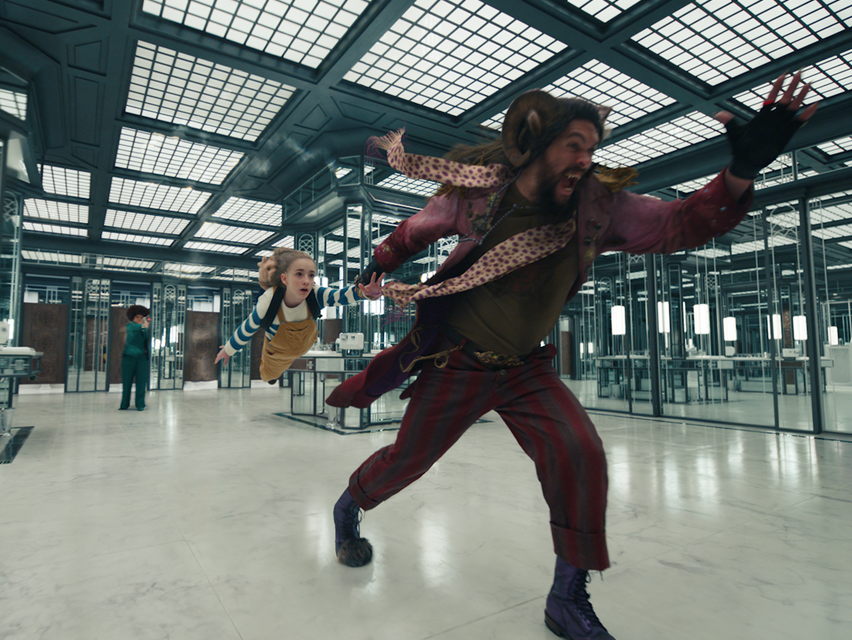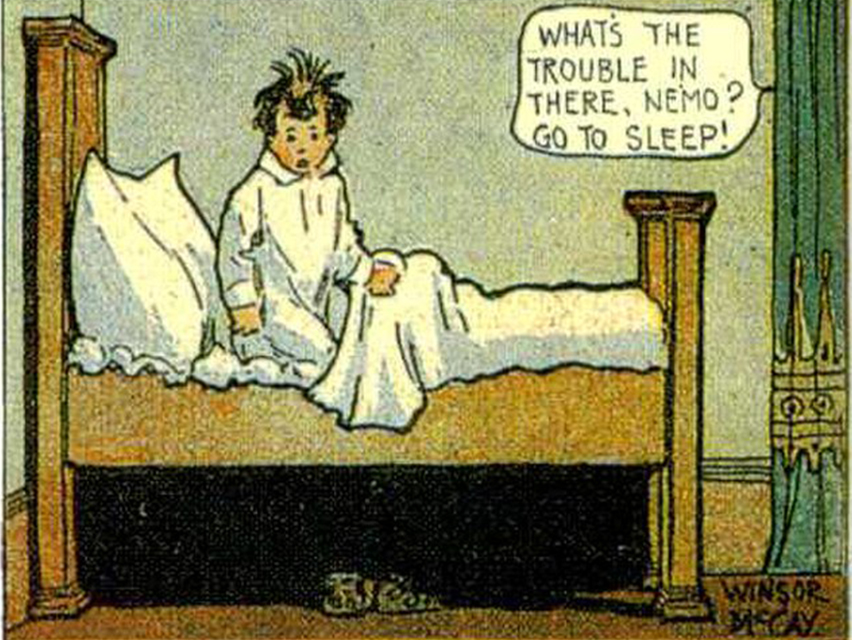Be the first to know — Get Outpost's monthly newsletter for news, tips and job opportunities.
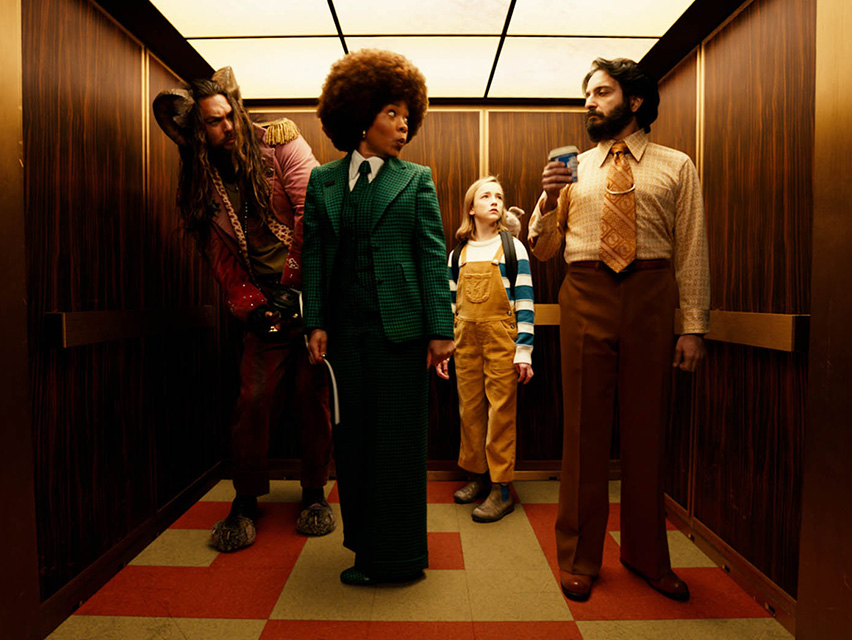
News
Turning Washrooms into Elevators: Outpost's Slumberland Adventure
22 December 2022
Working with LIDAR and a blue screen set, the team set to work in recreating a mirrored bathroom set which magically transforms into an elevator
Our Outpost Montréal team were excited to help bring the land of dreams and nightmares to life, working on a number of imaginative sequences that included animating a stuffed pig, freezing characters in time, and extending an office floor into infinity.
To get more of an insight into how the creative team tackled some of these creatively demanding scenes, we sat down with some of the team to discuss one sequence in particular where our 2D and 3D teams were tasked with turning a mirrored bathroom set into an elevator.
Hear from Outpost Montréal’s 2D Supervisor Luddnel Magne, Senior 3D Generalist Alex Falcon, Mid-Level 3D Artist Cedric Quach and Mid Lighting Artist Madison Tavernier on the creative challenges this sequence presented.
For an overview on Outpost’s overall involvement on this Netflix feature, visit our Slumberland work page.
In this sequence, the three main characters are in a mirrored restroom that shifts, rotates and transforms into an elevator. There were a lot of moving parts in this shot, where did you begin?
Cedric: When we were first given the brief, Pierre [Pappalardo, Senior Animator] created a rough guide for some of the animations of the different set elements so we could start to block out the sequence. I remember thinking how ambitious it was, but also how cool it would look if it was done well.
Alex: We also started with two LIDAR scans for this sequence; one for the bathroom module set that we could move around and reorganise, and one of the blue screen set that the characters were filmed on. We had to work with both so that the actors’ movements in the blue screen studio matched the bathroom set that Jake and Cedric built out.
Luddnel: Already at this point there were creative challenges around the LIDAR scans, as LIDAR is notorious for taking a dislike to reflective surfaces. So, when you have a room full of mirrors, you run into some problems. It was impossible to get a clear reading as the lasers would reflect off of one mirror, into another, into another, and so on.
Cedric: So Jake [Cohen, 3D Generalist] made the base model of the environment and then Tom [Rowell, Lead Generalist] started the whole animation without the LIDAR and spent some time on getting that right. When I came onto the project, the animation was done, and I just had to finalise the details – where and how the mirrors and doors should move etc.
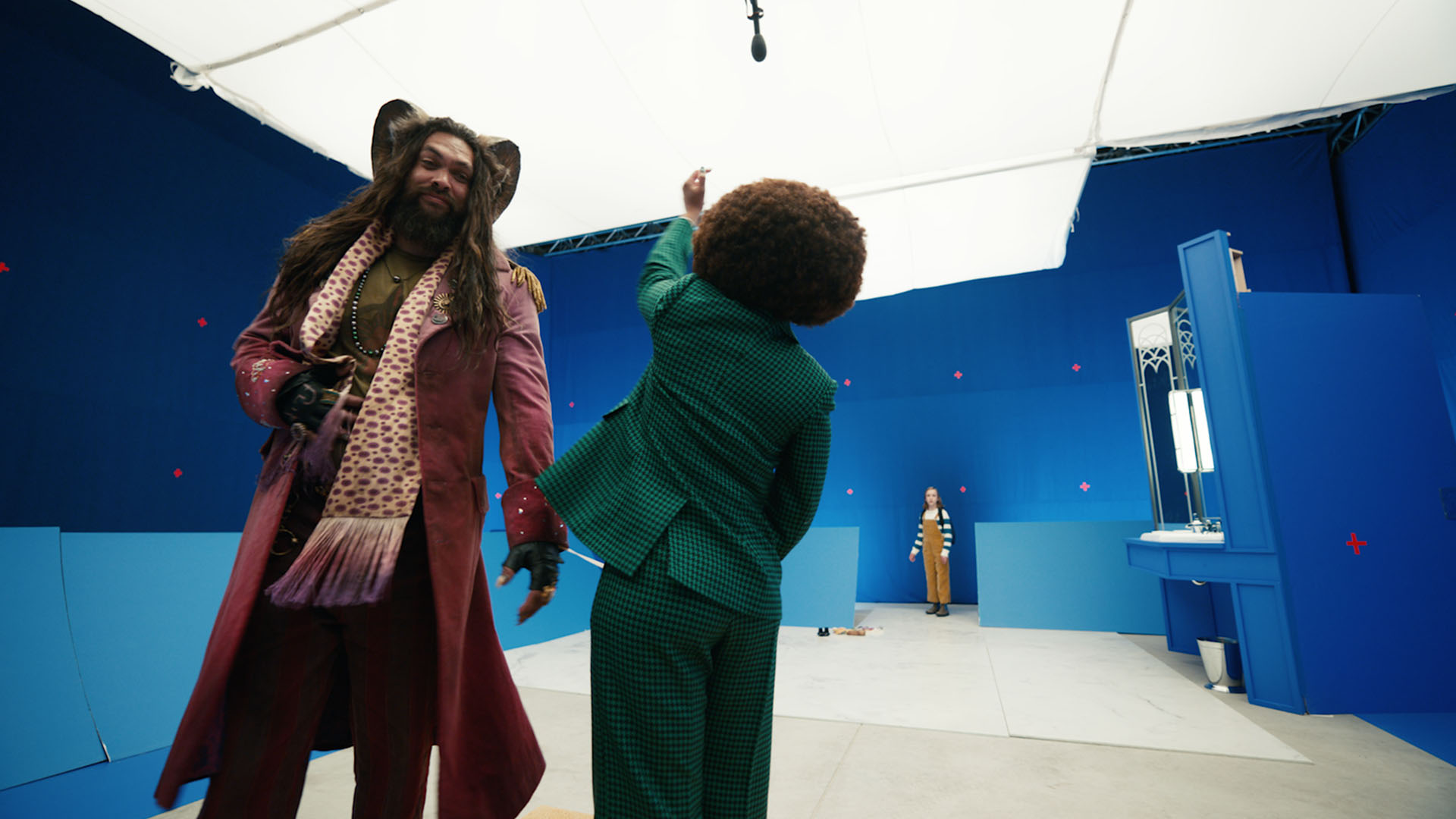
Main characters acting in the blue screen studio
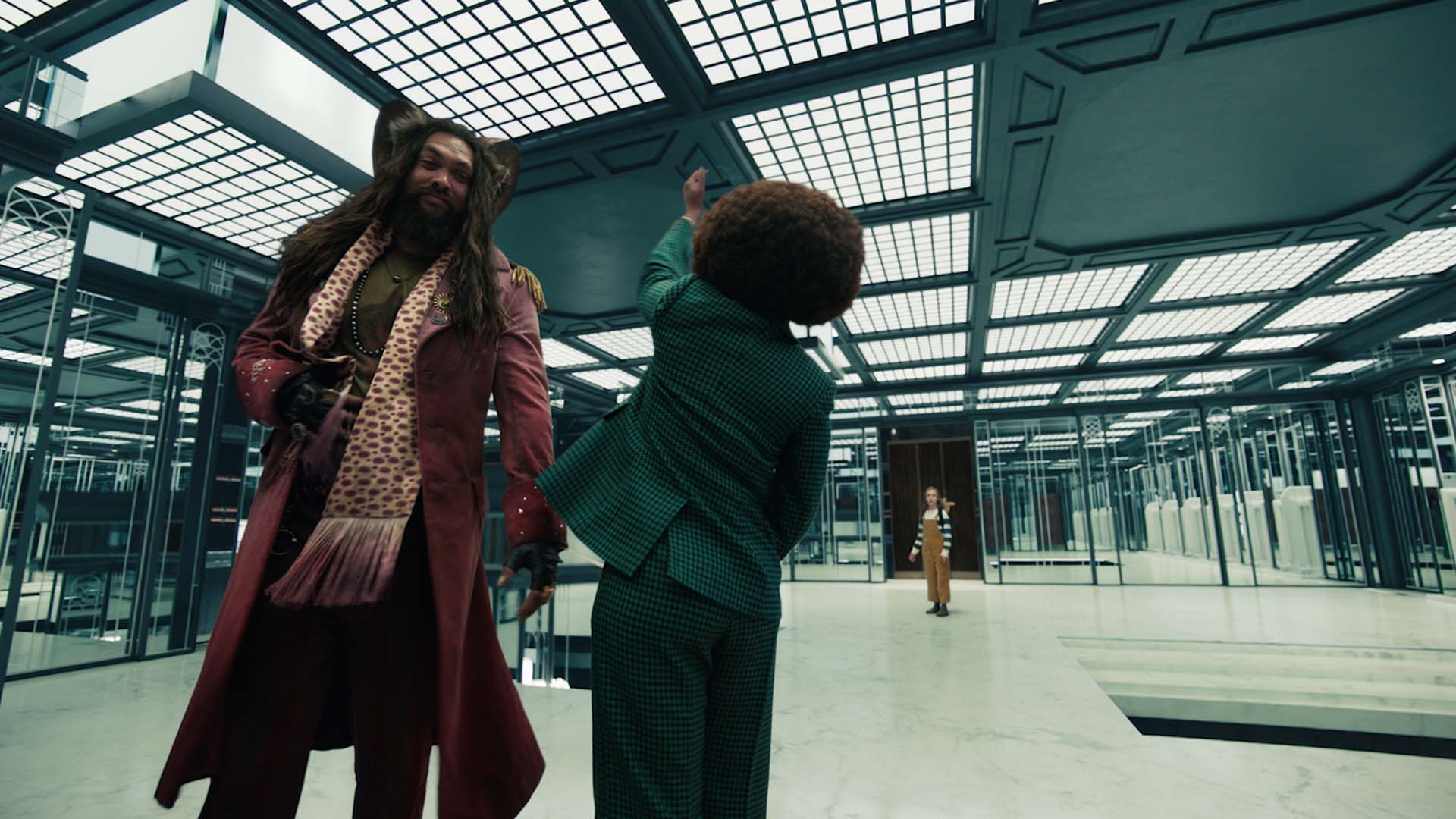
Blue screen studio transformed into mirrored washroom set
Madison: Initially, I think the main question was how we transform all of the pieces in an appealing way and also work with the clients so that we’re not constantly redoing work but instead building on top of the animation in a non-destructive workflow.
What were the initial conversations like on-team for this shot? Did you take inspiration from anywhere?
Alex: We were looking all over the place for ideas and reference, and I know that Dr Strange in the Multiverse of Madness – the towers falling and rotating, going in and out of each other – that was kind of a starting point. We actually ended up going with more of a physical mechanical adjustment.
Madison: I remember specifically the clients wanted every movement to have a reason, so not just things moving around aimlessly but instead elements turning into something else, not just randomly. I thought that was really interesting and it put a limit on what we could do but it makes more sense visually and it’s kind of more real-world so I think that was a big part of the constraints in the animation.
Cedric: I fell victim to that a little because when I finalised the animation, I was adding stuff here and there, but we ended up stripping it back.
The moving walls are mirrored. Did that add another layer of complexity?
Cedric: There were many points where we had to be smart about movement when it came to the mirrors. For example, rotating some of the mirrors and turning them into panels in the beginning of the animation to eliminate how long we had to deal with some of the reflections. This helped us when it came to the roto anim as that was a real challenge. It was so hard to match correctly because of how the plate was shot, we were guessing as to what Nemo’s legs would be doing in the reflections. So that was a creative challenge, plus more mirrors equals more rendering time.
Madison: I think one other thing that kept coming up was that you didn’t know how many reflections you were going to see until you rendered it. So, once you see it rendered you find all of the reflections of Nemo and you see “oh, that doesn’t look so good, she’s making a funny face,” or the animation looks weird because you’re doing the animation or roto of her back, let’s say, but in the reflections you get to see the front. So, you’re going to see it broken or not working nicely. You’re not going to see these things until you start rendering.
The final shot is one take almost a minute long. Did this make things more challenging?
Cedric: The rendering was tough! We basically had to brute force it. There was no optimisation that we could do because there were mirrors everywhere which meant we couldn’t hide anything as the camera is turning 360º, so we had to crank up the quality and just go for it.
We had issues because the first time we tried to render at high quality it was 24 hours a frame which was simply not possible. In the end we were able to reduce it to 12 hours a frame. Every time we had to re-render, I could see the expression on the face of the producers and coordinators, they were turning white, but in the end, we made it.
Luddnel: Yeah, the render time was pretty huge. Each mirror reflects a mirror which reflects a mirror indefinitely, so in the end we decided that we shouldn’t reflect more than four mirrors inside the scene.
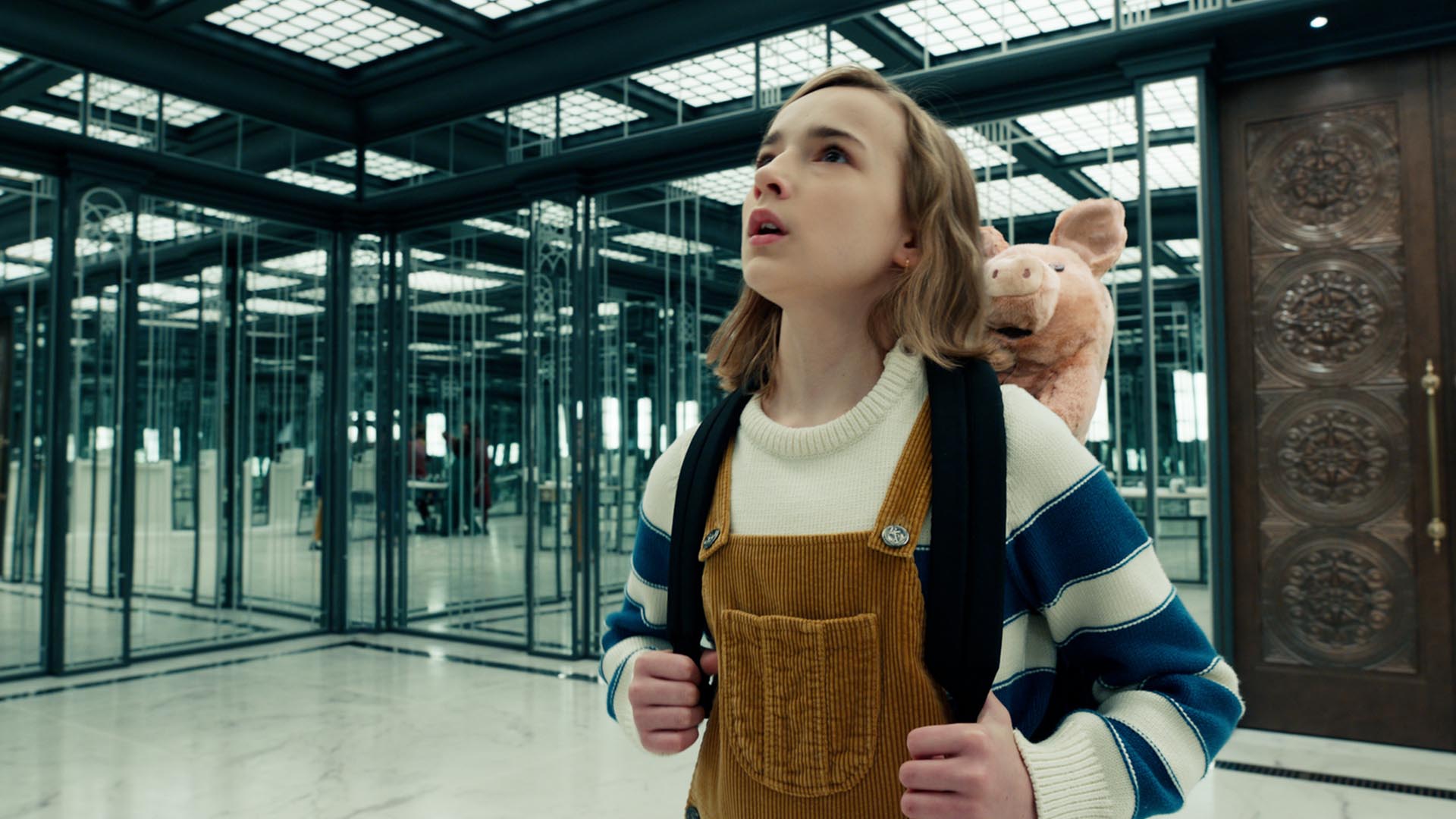
The reflections of the mirrors created their own unique challenge
Alex: Another aspect that I remember being quite a challenge was the fact that we technically had to do a transition between environments, the mirror room into the elevator into the elevator shaft. I always found that to be a fascinating aspect of the shot, considering they decided to do the lighting transition on set as well and we had to try and match that.
Cedric: It was one of the main challenges we had because we had to think about how to transition from one kind of lighting to another. We had to hide pieces of the bathroom with the panels of the elevator in a way that made sense visually but also served the purpose of closing off the bathroom lighting and allowing us to switch to the lighting from the elevator.
Finding a way to do this took a number of iterations; we had to make sure that the bathroom set was no longer in sight, dim the bathroom light and then switch to the elevator light. We also had another kind of lighting in the elevator shaft; we had point lights all along and there was an issue because they wanted to show the shadow moving. A lot of these issues were sorted out in comp because we absolutely couldn’t have done it in CG. In the end, we used DMP for the darker corners of the elevator shaft because it was so noisy in the render.
Luddnel: Timing was the biggest challenge for me because the animation had to serve the narrative and I had to make sure all the animation was credible, because the director wanted every piece to turn for a purpose, all within the time it takes for the camera to make a 360º rotation around the characters.
Also, the timing for the elevator shaft movement was a challenge. They shot the characters in the blue screen room and then used a dolly track to move backwards, but they needed us to change the speed so we could see the characters for longer before the doors closed. So those animations took a lot of consideration too.
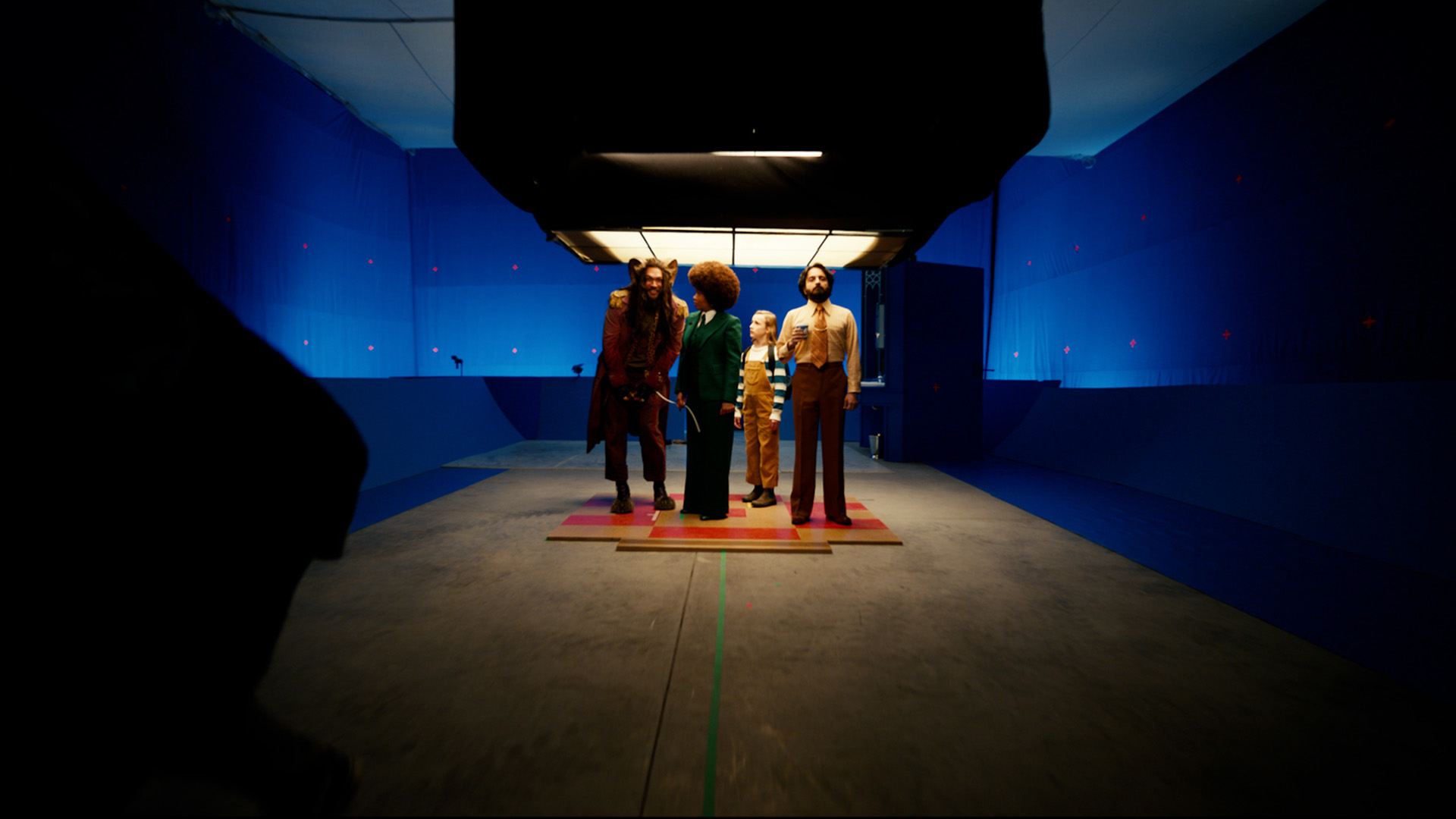
A dolly was used on-set to create the movement of the elevator
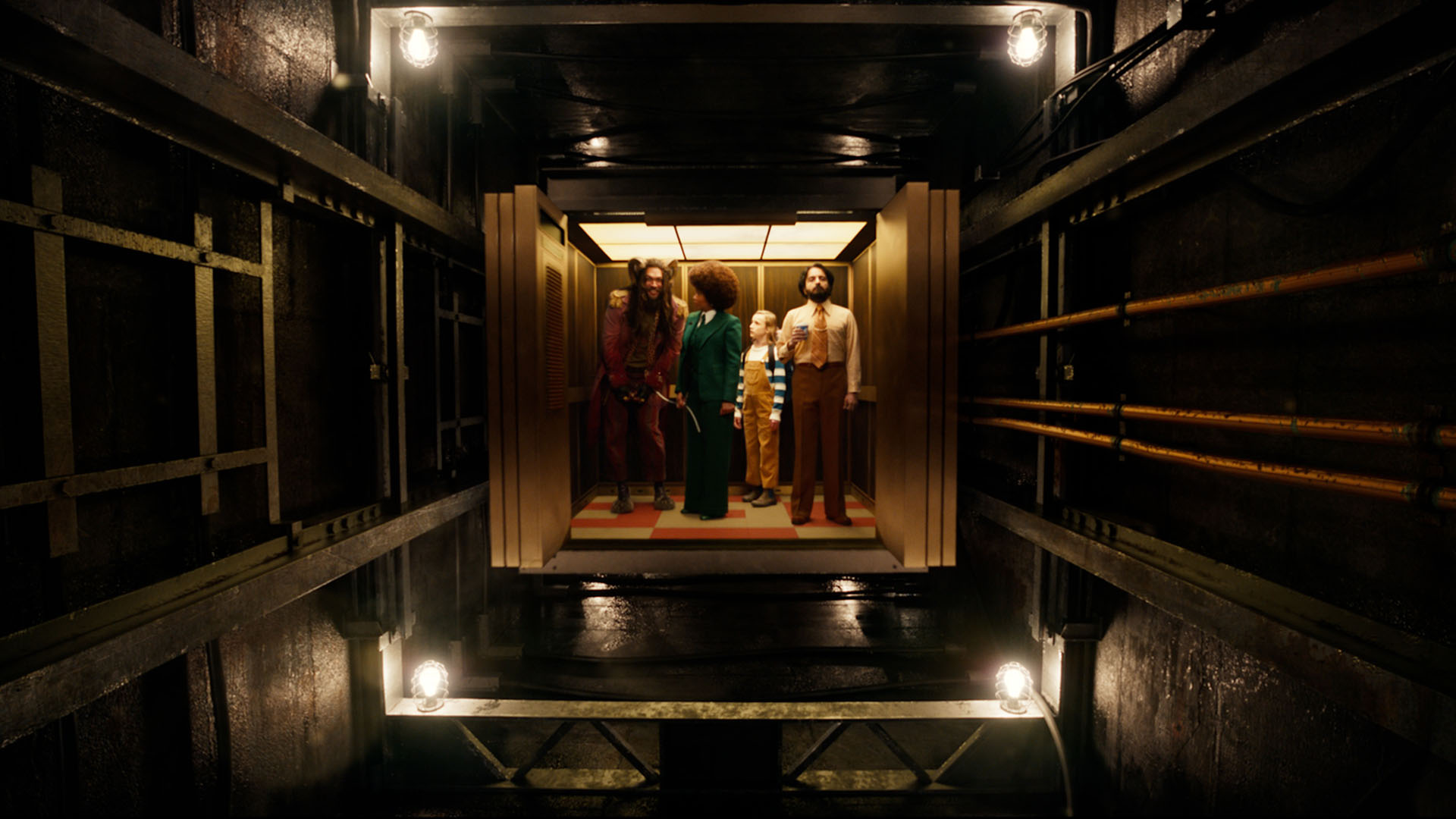
The final shot shows the CG elevator shaft, some of which is DMP due to the low lighting
The whole shot was filmed in a blue screen room, with some characters stepping into the scene. How did you map out the room while keeping some actors offscreen?
Alex: They had this section of tiled floor in this blue screen room that was the floor in the elevator and as all three of the characters step on it a light comes down, the orange light of the elevator and another character, Frank, kind of just steps on. He’s there the entire time in the plate, we can see him off to the side of the original three characters. And from what I remember of the discussions of this shot, there were a lot of issues with the fact that he’s not actually walking onto the elevator via the elevator door, so we had to think how do we get this to work?
Cedric: The first iteration we had of this, just one panel opened like a door where he steps in, but it didn’t look great. It was weird, it kind of worked but it wasn’t what anyone had really envisioned. But then the client talked about the pizza…
Madison: Yeah, the pizza [laughs].
Cedric: We had a lot of conversations about the pizza!
What’s the pizza?
Cedric: The pizza was what we called the disc on the floor that we ended up animating so that it rotated around. It was kind of like a carousel that the actor stepped onto, but it didn’t look right because his movement didn’t correspond to the movement of the pizza – in reality he would have fallen down with the momentum. So then at one point, comp roto’d him out and made a fake movement of the character based on the pizza and that worked.
Luddnel: Another issue we had with Frank was that the way he was shot, it wasn’t planned that he was going to turn into the elevator, and it was shot on a wide angle meaning that when his foot was close to the camera it looked like he had a huge leg. So I had to stabilise him, shrink him and change his scale so he fit onto the pizza and then based on that I put him into 3D and added some movement so it looked like he was turning at the same as the pizza.
Cedric: Basically, we had to separate him from the plate and animate him rotating around so that when he stepped on the pizza, he moves with it.
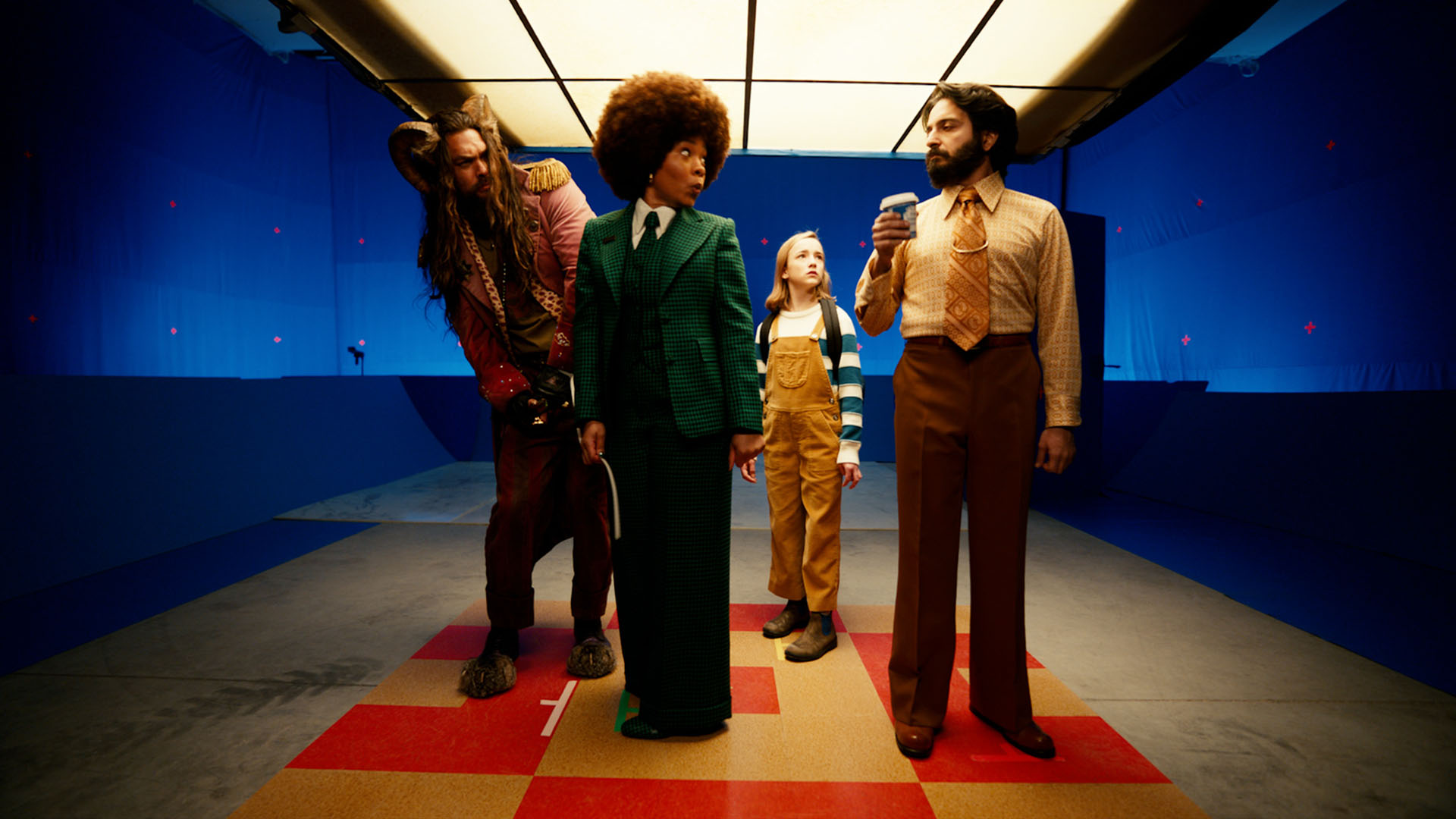
The addition of Frank in the elevator meant the team had to get creative with his entrance
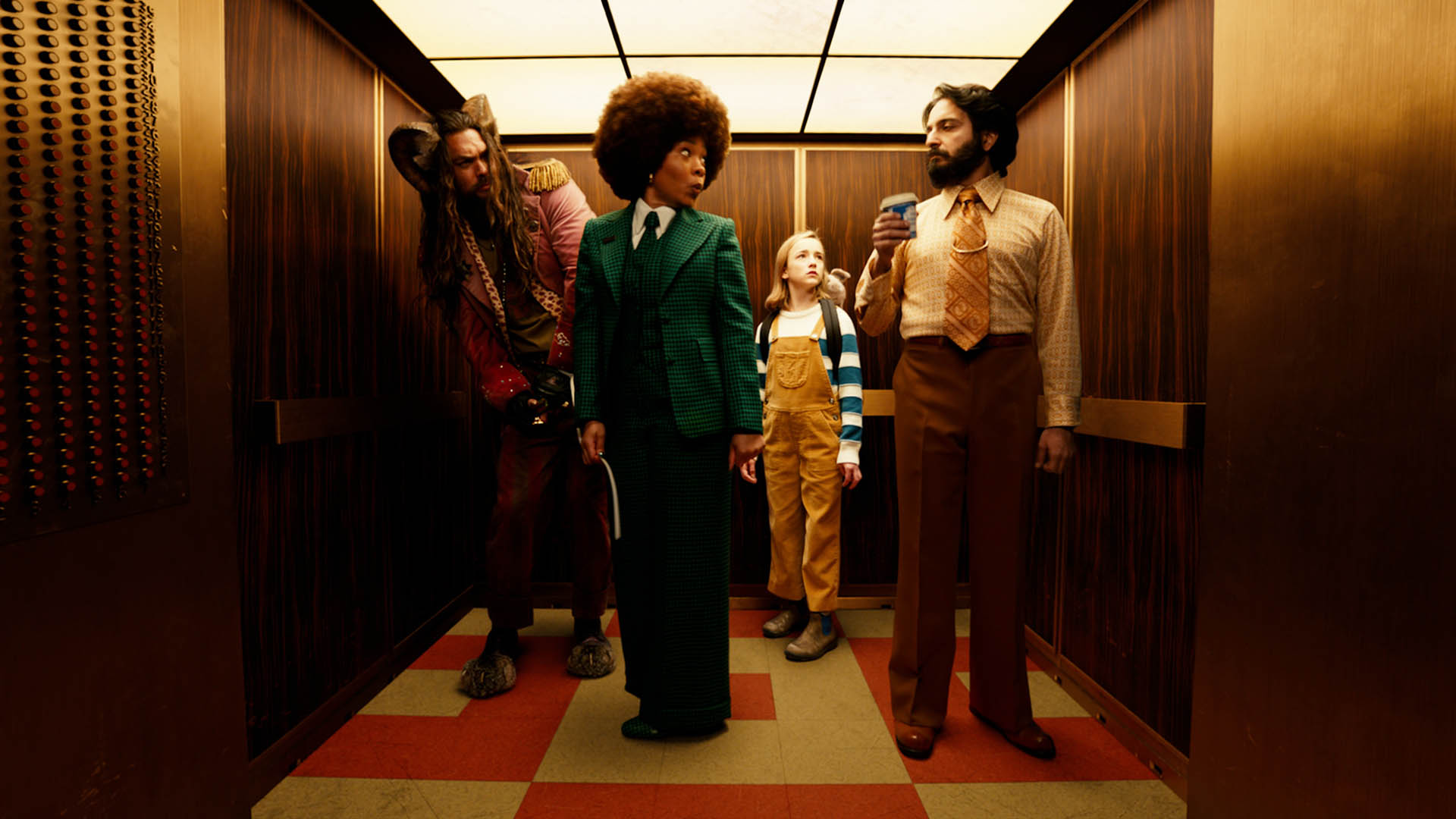
Frank is brought into 3D, so Luddnel can animate his movement alongside the 'pizza'
The film is set in a dream world. Was it fun to work on such an imaginative project?
Madison: For sure. I think what I liked about it was that there were so many departments that were heavily involved. A lot of shows are kind of heavy in one department or another, whereas this one felt like a lot of different departments had a big hand in it.
I feel like the biggest thing was staying well communicated with the rest of the departments and staying in touch really closely with CFX, Comp and Environments. Everybody just constantly communicating well with each other and being on the same page with things; seeing what’s possible, what’s not possible, what our skillsets are, handing things off to each other.
It was really important to have good teamwork, and I think just in general that’s what Outpost is good at, but this show specifically everyone was so good at working so closely with each other. I think we had a wrap party between Slumberland and Outer Range and pretty much everybody had worked on those two shows so it was a studio wide celebration which was such a nice experience for us all, to go through those two big shows together.
Cedric: You don’t tend to work on these kind of movies every day in your life as a VFX artist. If I could have multiple projects like this from now on, even if I had to spend six months on a shot, I would because the end result is so worth it.
Alex: I think Slumberland is a unique project in the sense that the reason I got into CG to begin with was not just to create normal, real-world elements and blend it in, but to really create this imaginative world where people know it has to be VFX. And if it takes a moment for people to realise it’s an effect; even better.
Luddnel: It’s the kind of shot I really like to work with because it’s a very technically challenging and I love to break it down and think about how we achieve it. If we can have a shot like this every time we work on a project that would make me so happy because all of the departments work together and we all had fun.
These types of projects build us as a team as it’s a whole team experience where we truly trust one another. For big shots like this we will have a dedicated shot channel on Teams where we can talk solely about this shot; where we got to, if we can do better, if we should try this or that. It’s not a one person shot, it’s a team shot, and everyone had a missing piece of the puzzle that made it really successful.
Watch Slumberland on Netflix now.


